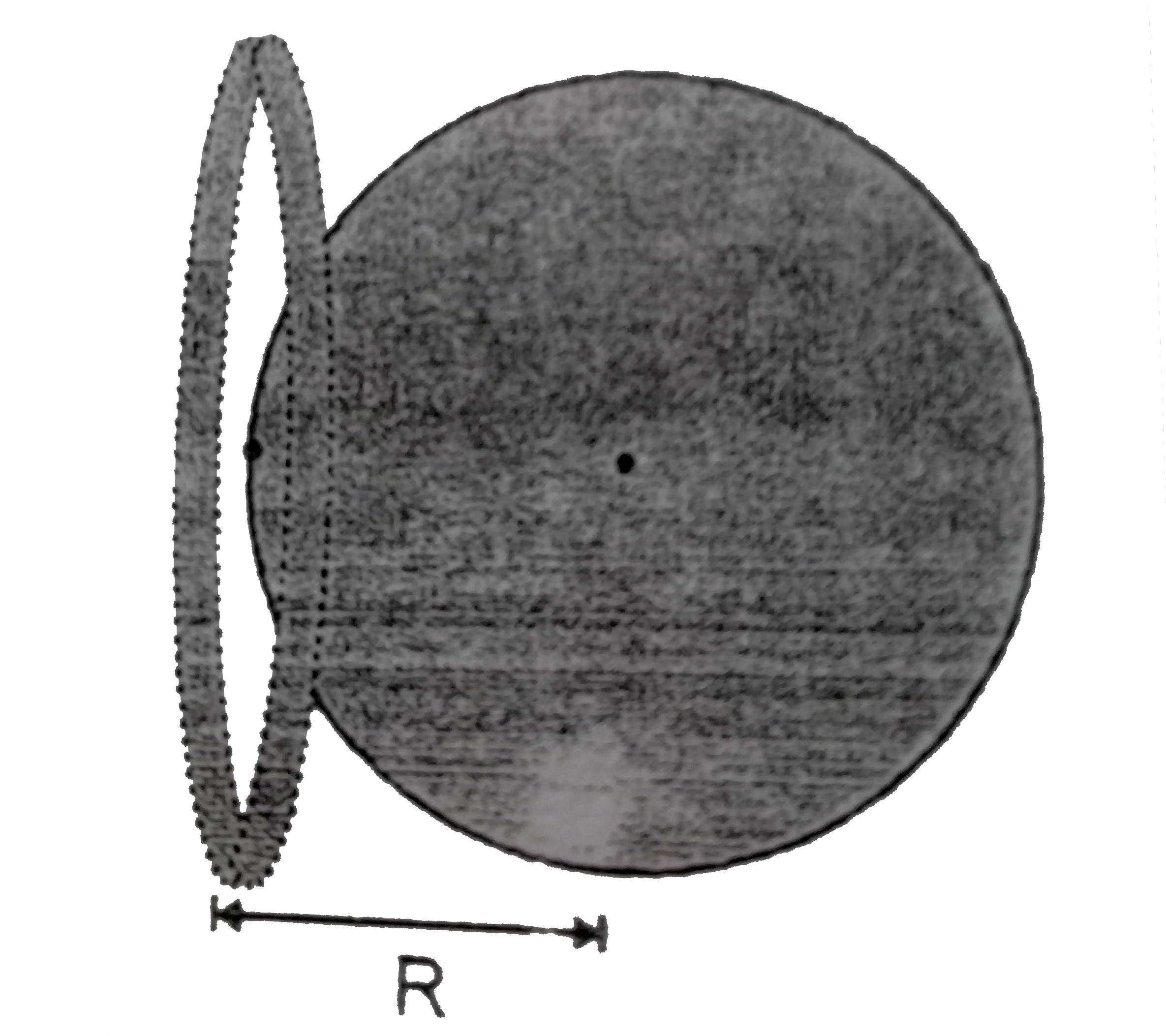A uniformly charged sphere carries a total charge of 2π×10−12 C. Its radius is 5 cm and is placed in vacuum. Determine its surface charge density.
The correct Answer is:2×10−10Cm2
To determine the surface charge density of a uniformly charged sphere, we can follow these steps:
1. Identify the Given Values:
- Total charge, Q=2π×10−12C
- Radius of the sphere, r=5cm=5×10−2m
2. Formula for Surface Charge Density:
The surface charge density σ is given by the formula:
σ=QA
where A is the surface area of the sphere.
3. Calculate the Surface Area of the Sphere:
The surface area A of a sphere is calculated using the formula:
A=4πr2
Substituting the radius:
A=4π(5×10−2)2
A=4π(25×10−4)=100π×10−4m2
4. Substituting Values into the Surface Charge Density Formula:
Now substitute Q and A into the surface charge density formula:
σ=2π×10−12100π×10−4
5. Simplifying the Expression:
The π cancels out:
σ=2×10−12100×10−4=2×10−1210−2×1100
σ=2×10−12+2100=2×10−10100=2×10−10×10−2=2×10−12C/m2
6. Final Calculation:
σ=2×10−12C/m2
Final Answer:
The surface charge density σ of the uniformly charged sphere is:
σ=2×10−12C/m2
- Total charge, Q=2π×10−12C
- Radius of the sphere, r=5cm=5×10−2m
The surface charge density σ is given by the formula:
σ=QA
where A is the surface area of the sphere.
The surface area A of a sphere is calculated using the formula:
A=4πr2
Substituting the radius:
A=4π(5×10−2)2
A=4π(25×10−4)=100π×10−4m2
Now substitute Q and A into the surface charge density formula:
σ=2π×10−12100π×10−4
The π cancels out:
σ=2×10−12100×10−4=2×10−1210−2×1100
σ=2×10−12+2100=2×10−10100=2×10−10×10−2=2×10−12C/m2
σ=2×10−12C/m2
The surface charge density σ of the uniformly charged sphere is:
σ=2×10−12C/m2
Similar Questions
A metal cube of length 0.1 is charged by 12μC. Calculate its surface charge density.
View SolutionA charged belt 60 cm wide, travels at 20ms−1 between a source of charge and a sphere. The belt carries charges into the sphere at a rate corresponding to 120μA. Calculate the surface charge density of the belt.
View Solution
Knowledge Check
A charged of 8×10−6C is given to a metallic sphere of radius 5 cm placed in a medium of dielectric constant 5. The surface charge density of sphere is
A2.547×10−4C/m2B5.248×10−4C/m2C25.48×10−4C/m2D52.48×10−4C/m2A semicircular ring of radius 0.5 m is uniformly charged with a total charge of 1.5×10−9 coul. The electric potential at the centre of this ring is :
A27 VB13.5 VC54 VD45.5 VAn unchanged conducting sphere of radius R is placed near a uniformly charge ring of radius R. Total charge on ring is Q. The centre of sphere lies on axis of ring and distance of centre of sphere from centre of ring is R
 APotential at centre of ring is KQRBPotential at centre of ring is KQ√2RCPotential at centre of ring due to conducting sphere is zeroDPotential at centre of conducting sphere is KQ√2R
APotential at centre of ring is KQRBPotential at centre of ring is KQ√2RCPotential at centre of ring due to conducting sphere is zeroDPotential at centre of conducting sphere is KQ√2R
A point charge is placed at the centre of a hollow conducting sphere of internal radius ' and outer radius '2r. The ratio of the surface charge density of the inner surface to that of the outer surface will be ___________ .
View SolutionA conducting spherical shell having inner radius a and outer radius b carries a net charge Q. If a point charge q is placed at the centre of this shell, then the surface charge density on the outer surface of the shell is given as:
View SolutionA uniformly charged conducting sphere is having radius 1 m and surface charge density 20 Cm−2. The total flux leaving the Gaussian surface enclosing the sphere is
View Solution(a) Using Gauss's law, derive an expression for the electric field intensity at any point outside a uniformly charged thin spherical shell of radius R and charge density σC/m2. Draw the field lines when the charge density of the sphere is (i) positive, (ii) negative.
(b) A uniformly charged conducting sphere of 2.5 m in diameter has a surface charge density of 100 μC/m2. Calculate the
(i) charge on the sphere
(ii) total electric flux passing through the sphere.
View SolutionA conducting sphere of radius 10 cm is given a charge of +2×10−8C. What will be its potential?
View Solution

